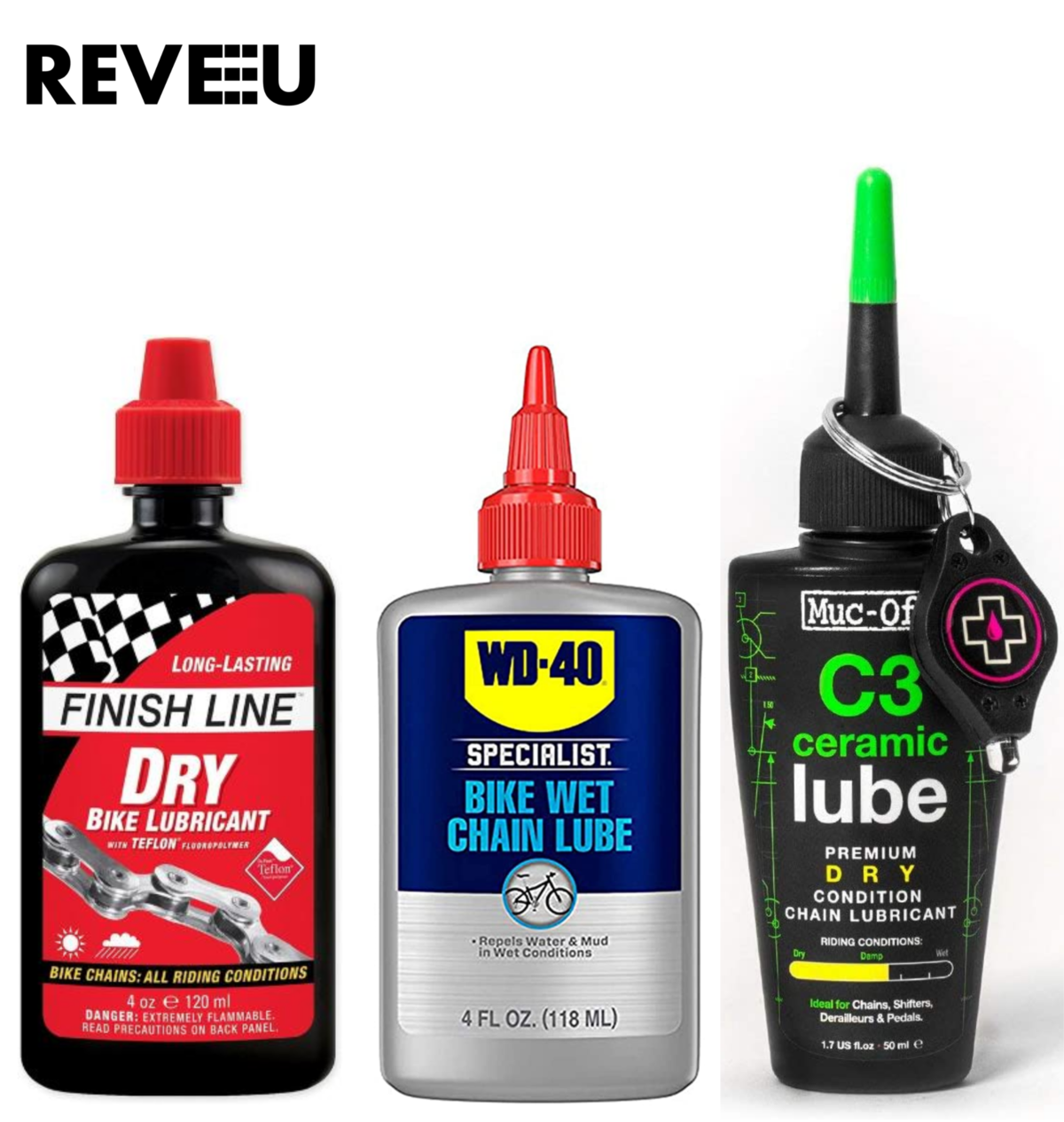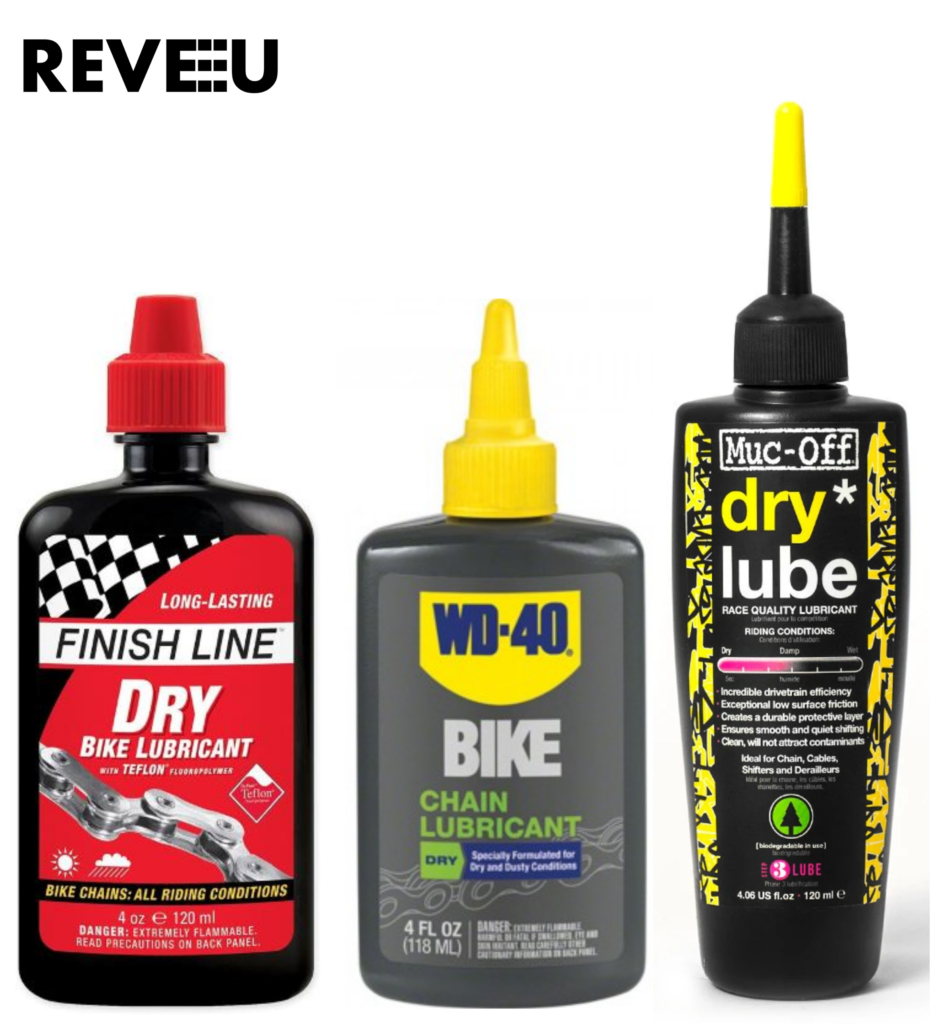Wet, dry, ceramic… words you start to hear when you need to lube your bike chain. And if this confuses you, we must add the different brands or manufacturers, who of course, will tell you that they have the best option to take care of your chain and transmission components.
Next, we’ll explain what properties they have and when to apply the different types of bike chain lube.
Important: In this post, we aren’t going to sell you bike chain lube or convince you to buy a brand. We’ll focus on explaining the essentials to lubricate your bike chain according to the track and weather conditions.
Why should we lubricate the bike chain?
It may seem obvious, but the truth does not hurt, this will help us understand the impact it has on both the chain and the transmission.
First, we must lubricate bike moving parts, because movement involves friction and this causes wear and improper operation over time. To this must be added exposure to the elements (mud, humidity, dust, water, puddles, rain, and other external agents), therefore, the transmission components and especially the chain must receive more frequent maintenance.
Types of bike chain lube
The two most popular options for the chain are wet and dry lubes, although there are variants that incorporate ceramic components or waxes.
All promise the mission of lubricating and protecting the chain, however, some will work better depending on the weather and terrain conditions.
We’ll explain how they work and when the most popular variants should be applied.
Dry lube
The difference between dry and wet lubricant is in the density or texture of both, and as the name implies, each works best in dry or wet conditions.
The dry lube has a lower density than the wet lube, allowing it to penetrate more easily between chain links and its texture makes dirt and dust adhere less easily.
Now, we must take into account that dry lube is less effective or rather, more sensitive to the effect of water, whether it be rain, puddles, or mud. On the other hand, its effect or duration over time is less compared to a wet lube.
In other words, during the dry season of the year, on dusty roads or with little mud or water, the dry lubricant is indicated.
Wet lube
Wet lube is denser (we could say, more viscous) and offers greater resistance to humidity, so our chain will stay better lubricated and protected in muddy and rainy conditions.
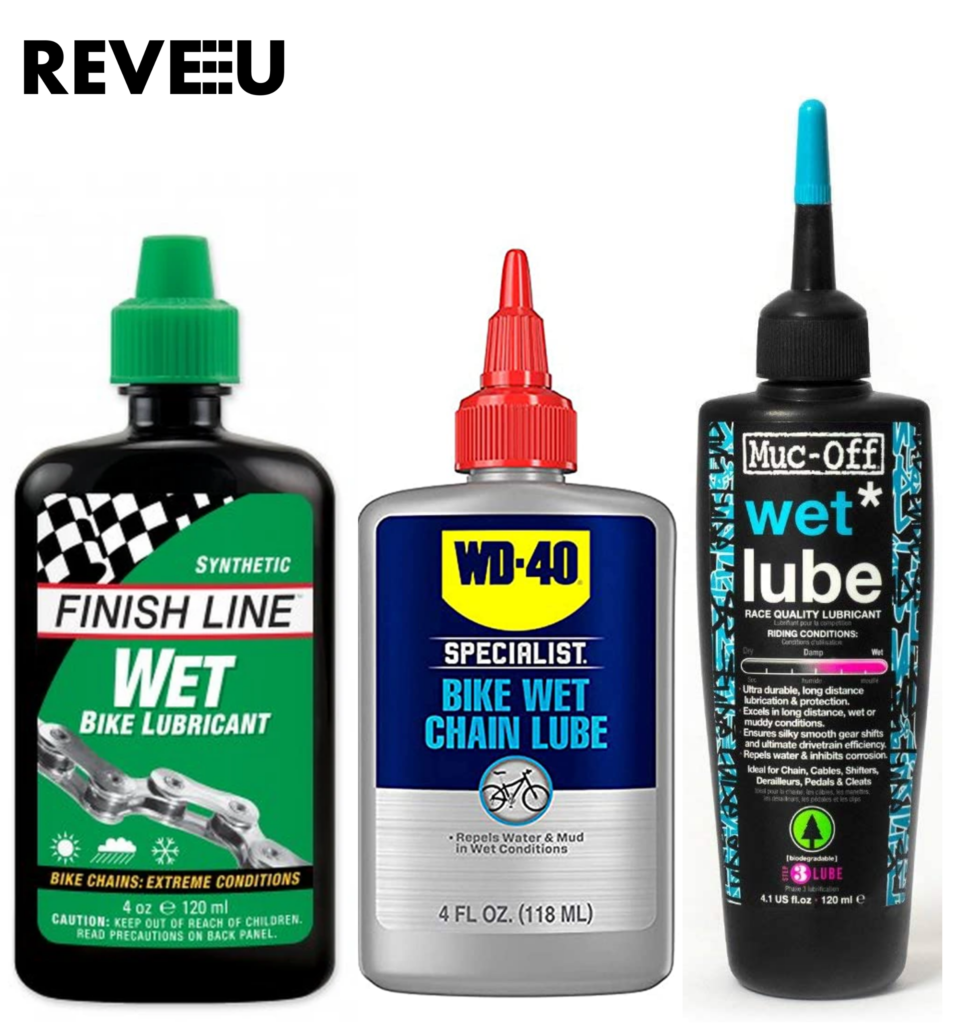
This doesn’t mean that it repels water or mud. What we obtain is greater protection of the chain against inclement weather.
In short, wet lube is more resistant to water compared to dry.
Now, what happens if we use wet lube during the dry season? Dust, dirt, and dirt in general, will be more easily impregnated due to their consistency.
Also, when it comes to maintenance, it will be more difficult to clean it from the chain.
Ceramic lube
These are oils that contain ceramic particles that reduce friction and at the same time promise a longer life.
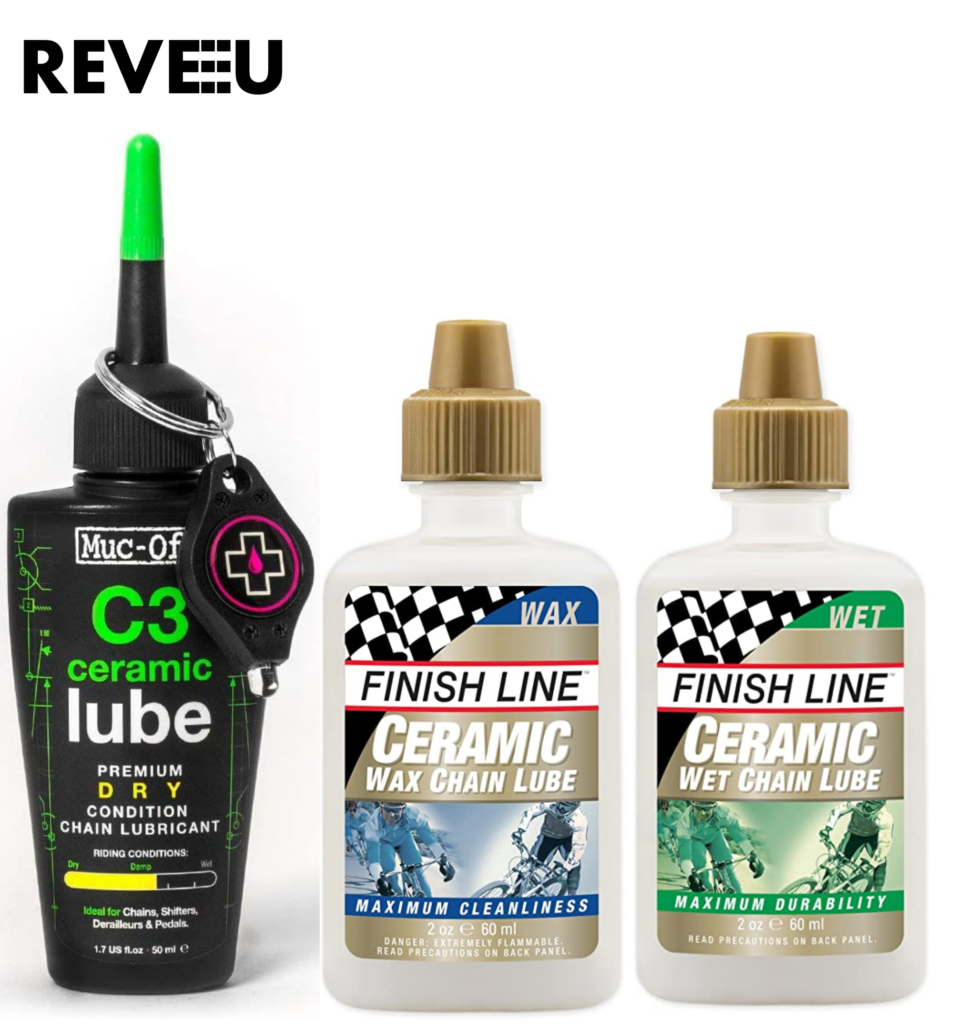
It can be found in a wet version for maximum water resistance, or also in wax, which is applied wet but then dries, leaving wax for maximum resistance in dry and dusty conditions.
Before applying this type of lube, we must shake the container or bottle well, since the ceramic particles settle to the bottom, otherwise, we would not be applying them with the lube.
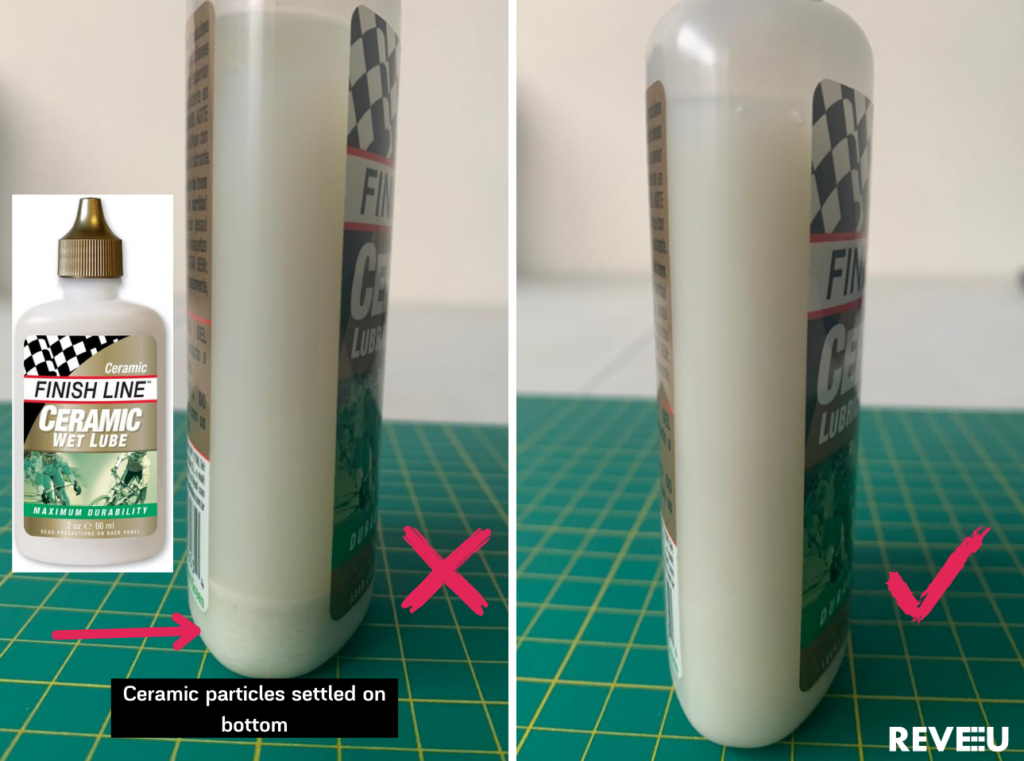
Also, we must apply it with enough time so that a dry film or layer is formed that guarantees the best lubrication and cleaning.
Although the time can vary between brands, it is recommended to apply it at least one day before going out.
Important points when lubricating the bicycle chain
- Do not use grease or products that aren’t specially formulated for bike chains
If the product you use is very dense or viscous, the chain will be filled with all kinds of external agents such as dirt, dust, sand, and even leaves; in a way that will affect not only the operation of the transmission but the life of the chain and other components.
On the contrary, if you use cleaning products or lubrication with low density, such as the classic multipurpose lubricant WD-40 (be careful, we refer to the generic WD-40) the chain will remain protected and lubricated for very short periods of time, and therefore, you will have to provide maintenance frequently and even during long trips. - Don’t apply lube to all transmission components
When I was a kid I thought if applied lots of oil or grease to the cassette, chain, and chainrings to eliminate noise and that they could work for life. By doing this, the only thing I achieved is that the whole transmission got dirty, the components would last much less, and even the chain would get stuck or fall frequently.
We must apply the lube on the chain, it is not necessary to do it on the cassette or plate. Besides, we must clean the excess with a cloth or towel.
If lube drops or spreads into other components, it will cause them to become dirty and may even affect their function. - Beware of spray lubricants
Although the spray versions of lubricants may be easier to apply, we must be very careful, because during spraying the lubricant spreads easily, in directions where lubrication is not necessary or can be dangerous such as brake discs or pads.
If you use spray lubricant, cover the discs with a cloth, and better yet, use the application tube to better control the product output. - Constantly check the lubrication and condition of the chain
The frequency of lubrication of the chain depends on the type of product that we use, the weather conditions, the type of terrain, and the distance traveled. Definitely, many factors come into play.
For example, according to Finish Line, dry lube can last up to 100 miles (160 km), while wet lube can last over 100 miles and ceramic lube up to 175 miles (281 km). Although these distances are sufficient for one or more routes, we must pay more attention to the condition of the chain and the other components.
When we finish a track, always check the level of dirt in the chain and the state of lubrication. In some cases, it may be enough to clean with a cloth or towel and apply the lubricant again, while in other cases, we will have to completely clean the transmission with a degreaser.
Even if the route to be made is very long or the terrain or weather conditions are very extreme, carry a small bottle of lubricant among the equipment to apply it in the middle of the journey. - Check the level of chain wear
We must remember that the lubricant will help us improve the operation and useful life of the transmission, but will not make it last for life. Therefore, we must use the wear level of the chain and other components such as sheaves.
Some manufacturers offer tools to check the condition of the chain, although it may be easier to take your bike for maintenance, so you can get a more accurate diagnosis of the general condition of your bike.

